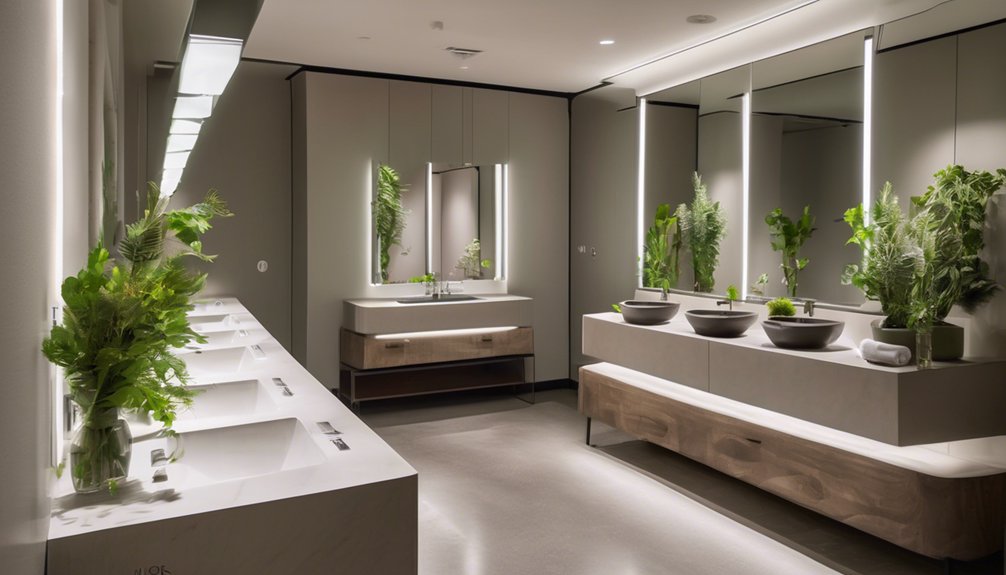More Than Just Toilets: The Social and Practical Benefits of All-Gender Bathrooms


Table of Contents
ToggleYou’ve likely noticed the growing presence of all-gender bathrooms in public spaces, but have you considered their deeper impact beyond mere convenience? They challenge traditional norms, fostering inclusivity for people of varied gender identities while addressing long-standing issues of safety and accessibility. By examining how these restrooms transform public interactions and promote equality, you might just uncover the broader societal shifts they signify. What might these changes mean for our communities?
While society has historically leaned towards gender-segregated restrooms, the landscape of restroom accessibility is undergoing a necessary transformation. The push for gender inclusive restrooms isn’t just a trend; it’s a response to the pressing needs of transgender and gender nonconforming individuals. Public restrooms have long been sites of social anxiety, where avoiding them is a common, albeit unhealthy, coping mechanism. All-gender restrooms alleviate this stress, ensuring everyone has access to vital facilities. Moreover, they address the chronic issue of lengthy wait times in women’s facilities, offering a practical solution to improve efficiency. The shift towards more inclusive restroom facilities reflects a broader commitment to inclusivity and equality, challenging traditional norms and enhancing accessibility for all.

Although concerns about safety in all-gender restrooms often arise, it’s crucial to critically examine these fears against the backdrop of existing evidence. Research disproves the myth that these facilities lead to increased violence. Instead, all-gender restrooms improve public access for transgender people, who face significant threats of violence elsewhere.
| Aspect | Impact |
|---|---|
| Violence | No increase in assaults |
| Communal Environment | Increases safety through user presence |
| Gender Identity | Accommodates diverse identities |
| Design | Private stalls elevate user comfort |
Transgender people often report feeling safer in all-gender restrooms due to their inclusive design. These facilities foster a communal environment, mitigating isolation and improving safety and comfort. By challenging misconceptions, you support spaces that respect every user’s gender identity and needs.

To create truly inclusive restrooms, design considerations must prioritize privacy and accessibility. Privacy is essential, and floor-to-ceiling walls and doors in stalls can improve user comfort, especially for gender nonbinary individuals. All-gender restrooms are about more than blending traditional men’s and women’s designs; they’re about rethinking restroom facilities entirely. Consider incorporating urinals with modesty screens to increase efficiency and reduce wait times, particularly for female users. Single-user restrooms in shared hallways offer another layer of privacy and comfort, accommodating diverse needs. Sustainable design isn’t just an option; it’s a necessity. Water-saving fixtures align with environmental goals without compromising style or functionality. By focusing on these aspects, you can create truly inclusive and effective restroom spaces for all users.
Considering design elements is just the beginning in the context of creating inclusive restroom facilities. Gender-neutral bathrooms play an essential role in addressing health issues faced by transgender individuals. Fear of harassment often forces them to avoid using public restrooms, resulting in serious conditions like urinary tract infections. By ensuring safe restroom access, you contribute to reducing these health risks and enhancing inclusivity. Moreover, these facilities foster a supportive community environment for parents, caregivers, and disabled individuals. The presence of all-gender restrooms not only increases safety but also diminishes stigma, encouraging broader acceptance. As restroom access becomes more inclusive, you help create spaces where everyone feels secure, ultimately promoting better health and community cohesion for all users.
While maneuvering through the legal landscape of restroom inclusivity, it’s clear that progress has been significant but fraught with challenges. Legal protections for transgender individuals have evolved, with cases like Lusardi v. McHugh affirming their equal access rights in public restrooms. However, legislative efforts in some states aim to enforce gender segregation by mandating bathroom use based on biological sex. This undermines transgender equality and access to public facilities.
Activism has propelled the movement for gender-inclusive restrooms, emphasizing dignity and safety. Consider the following:
Championing dignity and safety, activism drives the push for gender-inclusive restrooms.
Imagine walking into inclusive spaces where accessibility improvements greet you at every corner. All-gender bathrooms address safety concerns and offer privacy considerations that traditional restrooms lack. They foster cultural acceptance and community support, showcasing design innovations that accommodate diverse needs. Educational initiatives around these spaces promote understanding and intersectionality. The health benefits are profound, reducing stress for those who once feared discrimination. You’re not just entering a restroom; you’re embracing progress.
When considering if we should get rid of gendered bathrooms, think about how inclusive design can address privacy concerns and cultural perceptions. Safety issues and accessibility challenges often arise with gendered restrooms. Streamlining restroom efficiency can benefit everyone by minimizing wait times and enhancing user experiences. Community acceptance may take time, yet health implications favorably impact all. Critically, intersectionally analyzing these factors reveals that removing gendered bathrooms could foster a more inclusive society.
When designing all-gender restrooms, prioritize privacy features like floor-to-ceiling stalls. Clear signage guidelines are fundamental for user clarity. Implement robust maintenance protocols to guarantee cleanliness, and adhere to accessibility standards, including ADA compliance. Address cultural sensitivity by considering diverse needs and gather user feedback to refine your approach. Safety measures are vital, so establish effective implementation strategies that foster a secure environment for everyone, promoting inclusivity and respect.
Unisex toilets offer significant benefits. You’ll find that inclusive design addresses privacy concerns and accessibility issues, promoting community acceptance. By enhancing user experience and implementing safety measures, these restrooms improve public health outcomes. Cultural sensitivity is essential, ensuring everyone feels welcome. Plus, they’re cost-effective, reducing the need for separate facilities. An intersectional approach highlights how these restrooms can better serve diverse populations, fostering an environment of respect and understanding.
You’ve witnessed the revolution! All-gender bathrooms aren’t just a trend; they’re a crucial leap toward a utopia of inclusivity and equality. Imagine a world where everyone feels valued, safe, and comfortable in public spaces. These restrooms obliterate barriers, shatter norms, and redefine safety. They’re not just about convenience; they’re about rewriting the rules of society to welcome all identities. By championing all-gender bathrooms, you’re not just welcoming change—you’re part of history’s unstoppable march toward true equality.
 Featured PostsOctober 2, 2025FTM Top Surgery: A Comprehensive Guide to Your Options
Featured PostsOctober 2, 2025FTM Top Surgery: A Comprehensive Guide to Your Options Featured PostsOctober 1, 2025Inclusive Counseling: a Clinician’s Guide to Connecting With LGBTQIA+ Clients
Featured PostsOctober 1, 2025Inclusive Counseling: a Clinician’s Guide to Connecting With LGBTQIA+ Clients Featured PostsOctober 1, 2025HIV and Transgender People: A Look at the Data
Featured PostsOctober 1, 2025HIV and Transgender People: A Look at the Data Featured PostsSeptember 30, 2025What I Learned Living as a Man and a Woman
Featured PostsSeptember 30, 2025What I Learned Living as a Man and a Woman